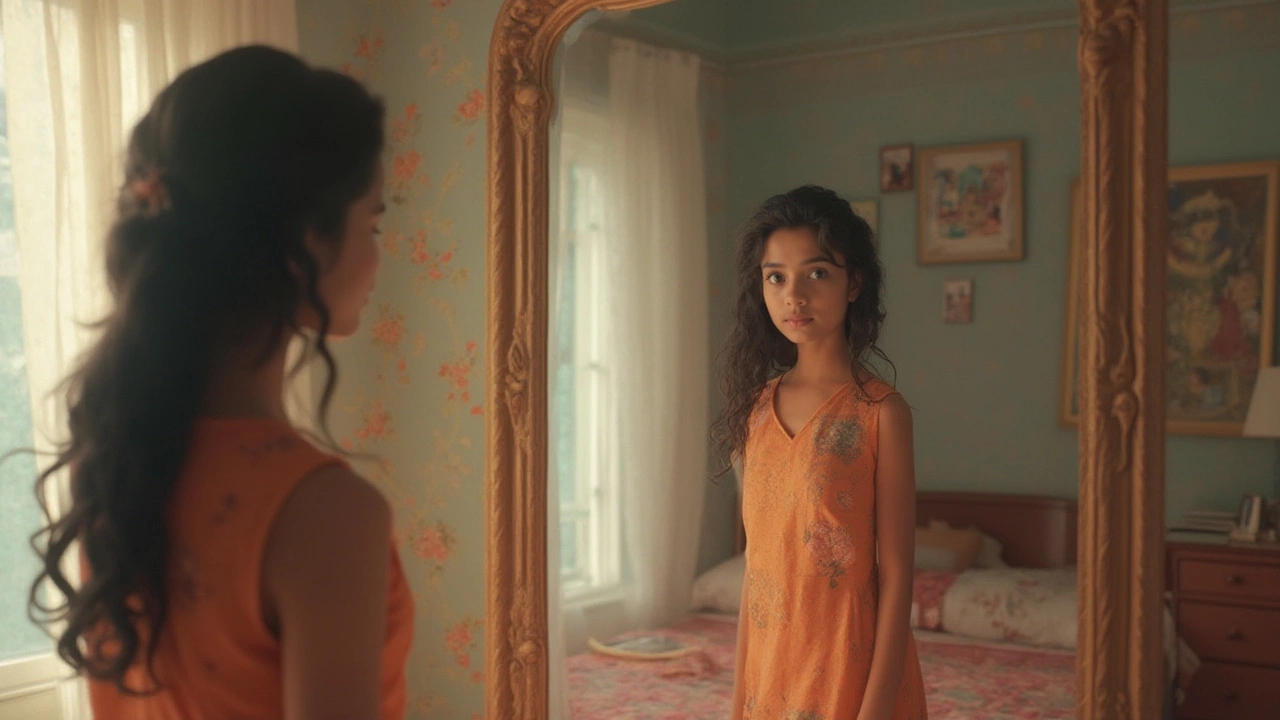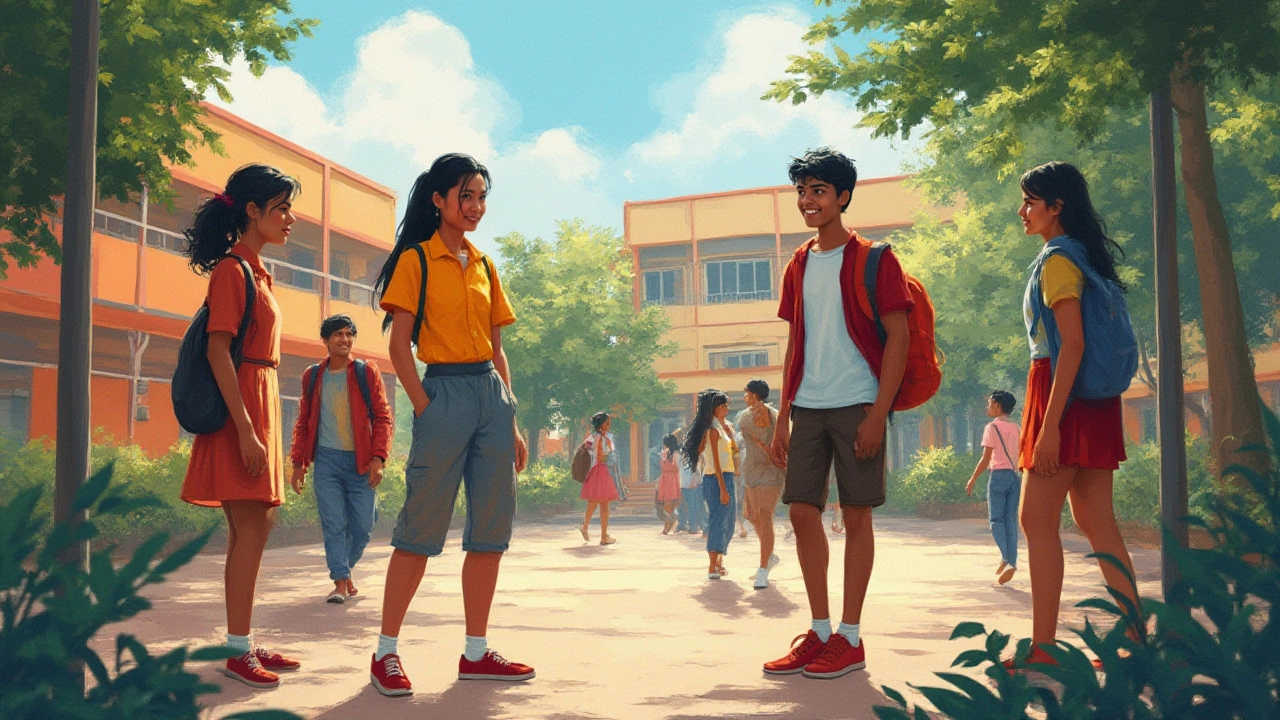How Others See You vs. Your Mirror Image: The Truth About Reflections
 Jul, 5 2025
Jul, 5 2025
Have you ever stood in front of the mirror, fixed your hair, and thought, “This is me?”—and then caught your reflection in a shop window and thought, “Wait, do I always look like that?” If you’ve felt confused, welcome to the club. The whole debate about whether our mirror image is how people actually see us has been bugging people for ages. Here’s something wild: studies show that people who stare at their mirror image for too long sometimes notice their own features looking just plain wrong. That weird feeling, called the ‘strange-face’ effect, is a real thing and not just you overthinking.
How a Mirror Really Works (and Why It’s Confusing)
First question—what exactly is a mirror showing us? A regular flat mirror doesn’t just bounce back our reflection; it flips it horizontally, which is why your hair parting or your smile always looks backwards. Raise your right hand, and the mirror seems to raise its left. This flip is key, and it’s why photos—especially selfies—might give you that “Who is this even?” moment. Most cameras don’t flip the image unless you tell them to, so the version you see on a friend’s phone or in their eyes is actually the real arrangement, not the reversed mirror version you’re used to.
What’s more, there’s a quirky bit about lighting. Ever noticed that your bathroom mirror feels forgiving, but harsh office lighting makes you want to run and hide? Lighting, angles, and even the quality of the glass seriously mess with your perception of yourself. In fact, designers spend big bucks on department store mirrors so you feel like a million bucks and maybe buy that outfit you’re trying on.
Now, toss in the awkwardness of video calls and security cameras. Most webcams default to showing your mirror image—because that’s how your brain likes to process your own face. But when you see yourself in an unflipped video or in a candid group shot, that’s the angle everyone else gets.
Here’s a snapshot of the ‘mirror vs. reality’ dilemma, in a nutshell:
| Situation | Image Seen | Flipped? |
|---|---|---|
| Mirror | Your own reversed reflection | Yes (left ↔ right) |
| Selfie (Camera Default) | Unflipped image (what others see) | No |
| Webcam (Default Settings) | Mirror image | Yes |
| Photograph | What others see | No |
The Psychology Behind Seeing Ourselves
So, if the mirror flips your face, why does it matter so much? It turns out, our brains have a thing called the ‘mere-exposure effect.’ We like what’s familiar. The face you’ve seen your whole life—the reversed mirror image—feels comfortable. That’s why some people hate their own photos: it’s not the face they’re used to.
A study published in the 1970s by psychologist Robert Zajonc highlighted this: people prefer mirror images of their own faces but prefer regular photos of their friends. That’s messed up, right? Your favorite selfie might not be your best angle in someone else’s eyes. And this is why a friend might assure you look great in a shot, while you feel like deleting it.
Physical insecurities also play a role. We stare at ourselves up close in the mirror, critiquing every tiny detail, but people see us from a distance, in motion, with different perspectives. No one else notices that small thing about your nose or that cowlick you obsess over. They see the big picture.
All this can mess with confidence. That mirror version—your reversed best friend—can shape how you walk into a room. Here’s something else to consider: celebrities and public speakers often rehearse their expressions in a mirror. But they also tape themselves on camera, so they get used to how people really see them. Try it. Seeing yourself moving and talking in a video can be enlightening (and maybe a little cringey at first), but it helps you grow more comfortable with your ‘public’ face.

Why We Look Better (or Worse) in Different Mirrors and Photos
If you thought all mirrors were created equal, nope. Some mirrors warp slightly, some have colored glass, and don’t even get me started on those funhouse mirrors at amusement parks. No two mirrors will give you the exact same reflection. Even the same mirror can tell a different story depending on the time of day, natural light coming in, or even the temperature and angle you’re standing at.
Ever gone out feeling pretty good and then seen a photo later that made you want to hide under a rock? Here’s a not-so-fun fact: phone cameras can slightly distort your features, especially at close range. The closer the lens, the more stretched-out things look. A research team at Johns Hopkins actually proved that selfies taken at a foot away can make your nose appear up to 30% larger than it actually is. Wild, right?
Another laugh: your face in a group selfie versus a solo mirror shot. In the group photo, you might spot yourself instantly and zoom right in on your ‘weird’ expression, but everyone else probably just notices the whole mood of the scene. We’re always tougher critics of ourselves than anyone else.
Lighting is a huge gamechanger too. Warm, soft lighting can erase blemishes and boost your mood. Fluorescent tubes in the office or gym can make anyone look washed out and tired. Lighting plays tricks with shadow and contour, sometimes making your face look sharper or rounder than reality.
One more legit trick: flip your selfies before sending them. Most phones have an editing tool for this. You’ll see yourself the way others do—even if it feels odd at first, it helps you get used to your real-life face.
How to Get Comfortable With Your Real Reflection
All this talk about flipped images and perceptions might leave you wondering: how can you get comfortable with the way you really look? The key is exposure (and a dash of self-compassion). Stop hiding from cameras. Record yourself talking. Watch your expressions, your posture, your smile. You’ll adjust, and your brain will chill out with time.
Another good hack is to try out different mirrors with different lighting at home. Stand a few feet away rather than right up close. Move around and see your face in motion—because that’s what people actually experience. Your resting face is just a small piece of the puzzle.
A lot of people swear by the photo flip trick—regularly flipping your selfies so you start to see what friends and coworkers see. At first, you might cringe a bit, but after a few weeks, it won’t look so alien. Some even print out a non-flipped photo and prop it up on their desk or fridge, just to get their brain used to it.
Pay attention to feedback from others. If your best friend, partner, or sibling keeps telling you you look fine, believe them. They’re experts on your regular, non-reversed face. Chances are, they actually like the quirks you dislike.
At the end of the day, remember that everyone else sees themselves with the same level of harshness. We’re all chasing after our ‘best angle’ and second-guessing our looks. The key bit is, your mirror image isn’t what people see—but it’s not the enemy, either. It’s just the version you’re most used to. Over time, getting used to the camera view can help you feel more yourself in every situation, not just in the bathroom mirror.